For the August Rotation we have the following games on the schedule Aerosian Nights 2 - Saif Bard Harder - Mark Blades in the Dark - Jo Call of Cthulhu - Julian Freespace Outlaws - Adam For further information on each please see: August to November 2025 Rotation To vote for your top three games, or to inform us if you are skipping the rotation please use the following link Game selection - August 2025 Please respond no later than Wednesday the 18th June 2025
First off this is not just limited to Dungeons & Dragons, but can be applied to all systems.
How To Run Narrative Combat
For those used to running RPGs using a gridded battle map and miniatures, running narrative "theatre of the mind" combat can feel both terribly strange and strangely familiar. If we're used to running combat on a 5 foot per square grid, the switch to combat in the theatre of the mind can easily make us feel like something is missing. How can we really know what's going on in combat if we can't see it?The answer lies in the other two pillars of our game—exploration and interaction. We don't set up battle maps and lay out miniatures when our characters have a discussion with an NPC. We likely don't set up a big map and start counting off squares when the characters explore an ancient ruin (although we can!). We don't have visual queues when we're describing how a thief narrowly avoids a poisoned pin while attempting to disarm a lock. Outside of combat, all of the rest of our game runs on the premise that a GM describes the situation, the players describe their actions, and dice are rolled. Combat doesn't have to be any different.
Even knowing this, actually running narrative combat can feel strange to us if we're used to the map and minis.
The Role of the Games Master
It's important that we carefully understand the role the games master plays when running combat and particularly in the theatre of the mind. GMs are not competitors to the players. Our goal isn't to defeat the characters. When we run using a gridded battle map and miniatures, it's easy for us to forget this role and start to think of it like we're the adversaries.We are not our monsters. We are facilitators for storytelling and our job is to make the story as fun as possible and help the characters do awesome things.
It's important that we embrace this and that we also define it for our players so they understand that we are not the enemy; that we want to help them do awesome things as much as they do.
This requires trust.
First off what is "Theatre of the Mind"
‘Theatre of the mind’ is the term used when playing a tabletop RPG without any physical representations of the game space.This style of combat doesn't require a battle map or miniatures. Instead GMs and players describe their actions in combat either completely vocally or with rough sketches and other visual aids.
Obviously, you’ll still have your character sheets and dice, but the characters, the world and all the action that happens between them plays out entirely in the imagination of everyone involved.
The Big WHY?
GMs, describe a lot of the parts, setting the scene, providing the atmosphere, invoking pictures in the GMs and the players mind, them bam the grid comes out and the miniatures come out and that setting is either destroyed or compromised and players revert to board game type tactics and min-maxing.
The appeal of using maps and figures is clear, and it can even seem like the more interesting and dynamic way to play - especially with the wealth of miniatures and scenery available to make or buy. But they can hold a session back just as much as they improve it.
In theatre of the mind sessions, players fighting on a beach might throw sand in the face of their adversaries, while minifigures would see the terrain as all the same. Obstacles and furniture also lose any tactical or imaginative characteristics as the players see them, especially when they’re nothing but lines on a grid, annoyances to be skirted around. Not to mention the difficulty of representing multiple floors, flying creatures, anything noteworthy on the ceiling or any measure of verticality with maps and figures.
Playing with minis typically makes the rules much stricter but doesn’t necessarily make the game more ‘realistic’. Figures take up exactly five feet, assuming they’re average size, which means that up to eight characters can surround a single enemy, which seems like far too many given all the weapons and magic being flung around.
On top of the restrictions they impose on the game and the imaginations of the people playing it, miniatures can also be appallingly expensive. On their own, models tend to cost around £10 per figure, so while the party can furnish themselves easy enough, a GM that wants to throw more than a handful of enemies at them is going to struggle.
Theatre of the mind isn’t for for everyone; in the end, it comes down to your roleplaying group’s personal preference. But while attempting to follow a battle with multiple enemies and allies in your head may seem overwhelming, the alternative only works by reducing the creativity, speed and scope of the conflict.
So the Big HOW?
A Quick Summary for Theatre of the Mind Combat
This is a long article so provided is a quick summary before getting into the details. You can use this summary to refresh yourself before you run combat in the theatre of the mind.
- The GM isn't a competitor of the players but an adjudicator for the story.
- Running combat in the theatre of the mind requires trust. Work with the players, not against them.
- Help players meet their intent. Ask what they want to do and help them do it.
- Start small. Run small battles in the theatre of the mind to get used to the style.
- Each turn describe the situation from the point of view of the current character.
- Use quick diagrams if it helps clarify the situation.
- Assume enemies are within 25 feet of the characters and describe clearly when it is not.
- Adjudicate the number of targets in an area of attack based on its size and the current situation. Lean in favor of the character.
- Ask players to identify monsters by describing interesting physical characteristics of those monsters.
- Use evocative in-story descriptions to bring high fantasy to the battle.
- Unless it clearly makes sense otherwise, choose targets randomly to avoid perceptions of bias.
- Adjudicate edge cases as they come up based on the intent of the player and the intent of the spell or ability in question.
Trust
In order for smooth and seamless combat in the theatre of the mind to work, the GM must earn the players’ trust. This means talking to your players about how you're going to adjudicate combat in the theatre of the mind and demonstrating that when a player tells you what they want to do, that you're helping them do it.One great way to get players to embrace combat in the theatre of the mind is when they realize they can do more than they could with a grid. Theatre of the mind combat means combat can move faster than many players expect. It means they might have more options available beyond what’s listed on their character sheets. It means drawing them into the action.
Some players tend not to want to tell the GM exactly what they want to do. It feels like a competition to them and they want to hold some of their cards close. They might feel like the GM is about to spring a "gotcha" moment on them (and sometimes we do) so they want their own "gotcha" moments in return. This breaks the trust, however, and limits both the player and the GM in what they can do. To get past this, we have to describe what is going on each turn and ask continually for their intent.
Even when circumstances are dire, trust in your Games Master means having faith that your GM isn't trying to trick you. Their villains may fight dirty with your character, but the human beings playing around a table together are friends who want to see each other succeed.
Intent
There is one fundamental mechanic to running combat in the theatre of the mind:The GM describes the situation, the player describes what they want to do, and the GM adjudicates how they can do it.
- The GM describes the environment.
- The player describes what they want to do.
- The GM narrates the results of the adventurers' actions.
Focus on intent
A Focus On Intent: "What Do You Want To Do?"
When players describe their intent and games masters adjudicate the situation based on that desired intent, combat runs fast and furiousThis is the most important question in RPGs overall and that doesn't stop when combat begins. The more details we have about what a player wants their character to do, the better we can help them achieve these goals. Instead of playing a guessing game, a back and forth between the GM and player to try to figure out what is going on, we can simply ask what the player wants their character to do.
In order for this to work, the player must trust the GM to adjudicate fairly and the GM must maintain that trust by doing so. In general a GM should steer in the PC's favour when handling edge cases as long as it is within reason (for a fantasy action game) and is fair to the capabilities of the other characters.
This is a hard habit to get into. Often players will ask how far away an enemy is. We can easily tell them "about 25 feet" but we really want to turn the question around to "what do you want to do?" Unless the request clearly breaks the boundaries, they likely can do it. "I want to blast the boss with a pair of eldritch blasts." "Done!"
Different situations will call for different rulings. Sometimes a fireball may take out only four kobolds while another time it will take out twenty. A lot of variables can change these guidelines and these changes should be made clear before PCs commit to any given action.
If players feel screwed out of their turn because the GM decided their action isn't as effective as they thought, that player won't trust the GM's judgement. They'll feel like they got screwed because they couldn't play it out on a grid. In general, when running combat in the theatre of the mind, players should have the option of changing their minds if their results aren't likely to meet their intent.
This is a point we need to continually reinforce with the players. It’s important that we describe, each turn, what the situation is for their character. With that information in mind, we want the player to say what they want to do and then help them do it.
This intent can get quite detailed too. Characters with highly tactical options might have very particular things they want to do. We should continue to reinforce that stating their intent helps them achieve these particular things.
If player’s character is a glaive-wielding polearm master, the player likely wants to position the character so they can get the most options to hit incoming enemies. Okay! State the intent. "I want to position myself so I can hit any orcs that rush in." This not only helps us understand what drives the player but also how we can do it. We're more likely to throw orcs at this glaive wielding fighter because it's so cool to watch the character hack through enemies.
To get a better understanding of how combat in the theatre of the mind works, we can dig into the details a bit more:
- The GM describes the situation and highlights any notable features of the location. This includes describing where monsters are, what they're doing, and any other information that will aid the player in understanding what actions they can take.
- We roll initiative just like normal.
- Players describe their intent. "I want to run up to the lead orc and smash him in the face with my war maul."
- Sometimes GMs need to clarify the situation. "There is a long flaming crack in the ground between you and the head orc." Most of the time, we say "sure, awesome!"
- Dice are rolled. Both the GM and the players can describe the results of their actions. "Your maul cracks into the orc! How does he die?" "My maul hits with a sickening crack and the orc falls back into the flaming crack!"
- On each characters' turn, the GM clarifies their circumstances "Syvaz, it's your turn. Bondidio just smashed an orc in the head but two of the orc's friends are still on the other side of the crack firing arrows at you. An ogre also rushed in, leapt over the flaming crack, and is nearly on top of you. What do you do?"
- On the GM's turn, the GM describes what the monsters do, who they attack, and how. " Syvaz, both orcs fire arrows at you after seeing you slay their friend. Bondidio, the ogre rushes forward and attempts to smash you to pulp with his huge club!"
- The battle continues.
Start Small
If you or your players are used to running combat on a map with miniatures but want to try combat in the theatre of the mind, start with small battles. Perhaps the characters run into a small patrol of bandits or goblins, fewer enemies than characters. Instead of putting out the gridded map and dropping miniatures on the table, roll for initiative and ask them what they want to do. This gets you and the group used to the style in a low-stakes situation.Such battles might feel like a waste of time but, when we keep theatre-of-the-mind combat as an option, the time spent on these small fights is significantly less than with a grid. Not every battle needs to be a significant challenge. Sometimes a small fight fits the story and theatre-of-the-mind combat lets it flow right into and out of the rest of the game. These small fights might extend to battles that are a significant challenge where the characters face a single large monster, maybe even a legendary monster.
Simple fights like this usually have simple environmental areas (an open room, a hallway, a road, and the like), a single type of enemy (you can never go wrong with bandits), and a lower overall challenge (fewer monsters than characters with a challenge rating of less than a quarter of the characters’ level).
Starting simple with theatre of the mind battles is a great way to get a feel for them and see how they work out for your players. As you get more comfortable with combat in the theatre of the mind, you can try more complicated fights. You need not run all your fights this way, but having the experience lets you use it when the pacing of the game best supports it.
Description from character point of view
When running theatre of the mind combat, it is on us as GMs to describe the situation to each player on their turn. We focus on the details most important and most visible to their character. This may seem like a lot of work but it serves to reinforce what is happening to all of the players each turn, and gives the opportunity to reinforce story elements in addition to what would normally appears on a battle map.When you get used to the capabilities of the characters and the desires of the players, you know to describe the things that matter to them.
A description might sound like this:
"Pommel, you are standing next to Bondidio and the mace-wielding gladiator. The mage who cast fireball is currently invisible, but you think you know roughly where he is. The assassin and spy have ganged up on Punchy who is about 20 feet away. The evil priest of Bane is still chasing butterflies from Bondidio’s hypnotic pattern."
That is a pretty complicated situation so that's about as bad as it gets.
Quick Diagrams
Fall Back to Quick Diagrams
There is no reason to always use a gridded poster map and miniatures for combat, there's also no reason to only use words and descriptions instead of jotting down some rough diagrams if it helps.A piece of paper, erasable white board, or dry-erase poster map are extremely useful to jot down a rough map when it helps to clarify the situation in a battle using the theatre of the mind. These need not be complicated. You can use dots or Xs or Os for monsters and characters. You can scratch them out or rewrite them if you want. Rough diagrams used as needed are much faster to use than arranging a full battle map and miniatures. Don't be shy to use whatever tools help the story move forward.
When playing on a grid, you can use templates and other game aids to quickly assess the area of a spell's effect. Learning to "eyeball it" instead is one of the greatest challenges of switching to theatre of the mind play.
Table Aids for Narrative Combat and the Abstract Map
It is possible to run combat in the theatre of the mind with no physical aids at all. Table aids, however, can help everyone understand what is going on. This might be everything from a quick sketch on a piece of paper to an elaborate arrangement of 3d terrain and miniatures. Even if we do end up with a beautiful map, we can still abstract the distances and describe actions using in-story descriptions.Pathfinder Flip Mats by Paizo are one of the best aids for running RPG games. Though gridded by design, it is easy to ignore the grids and use the surface of the poster map to write out all sorts of information such as the names and characteristics of enemies, current damage on those enemies, enemy AC once it's clear the characters know it, and all sorts of other information. The blank dry-erase poster map is an incredibly useful and versatile tool for running RPGs and a great investment.
As mentioned earlier, miniatures for the characters can help everyone keep track of what monsters are in the fight, who might be within 5 feet, and who is in the back row of a fight.
When using a dry-erase poster map like this, its important to clarify to your players, before battle begins, that there is no fixed distance on the map. As mentioned before, players should tell the GM what they want to do and the GM should tell them how they can do it. Focus on intent.
Distance
One of the most annoying issues a GM can encounter while planning and running any roleplaying game is distancing, a problem only compounded with minifigures. When mapping out a dangerous dungeon, it can be hard to position every wall, enemy and trap in exact terms. In theatre of the mind, the GM has enough room to be vague about some things without ruining the atmosphere.When running combat in the theatre of the mind, we abstract some of the details of our characters and monsters in order to speed things up and put the focus on the bigger actions taking place during the game. The fact that a dragon is breathing out white-hot fire on our heroes or a wizard is tearing through the hordes of goblins with a roar of lighting is more important than the fact that an elf moves 5 feet further than a human.
Most RPGs distances are measured in 5-foot increments, however, so we can still use distances to describe what is going on. The cult leader can be 40 feet away behind an altar of obsidian and bone while his cultists, surrounded by impaled sacrifices, are roughly 20 feet away running in with daggers high. That's not hard to describe.
Mostly players want to know whether they can move up to someone with a move or not. Most of the time, we can just say "yes", and move things along. If it takes a Dash action to reach someone, we should mention that when we're describing it so it doesn't become a surprise that someone might lose their action to reach an enemy. Sometimes a move and a dash might not be enough if their enemies are really far away. Again, describe this ahead of time so it’s not a surprise.
To keep things simple, we can tell our players to assume enemies are roughly within 25 feet of the characters unless we state otherwise. This puts them in range of most ranged attacks and move actions. If things are further than that, we can describe those edge cases specifically. They too can assume that creatures are roughly 25 feet away unless we state otherwise.
When describing distances, we can use Marks to identify important areas of the battle. The bone and obsidian altar can be one Mark. Nearby impaled corpses can be another. This helps players visualize the main features of an area in their minds.
Picturing an epic duel between the forces of evil and the band of heroes can conjure up moves with makeshift weapons, targeting specific areas of the enemy and parkouring across the arena, minifigures are much more grounded. The map transforms any environment into a flat barren space with some obstacles and enemies.
Movement in Narrative Combat
While each character race has a different movement speed, we can abstract this movement out without losing much of the feeling. In general, when a games master describes a situation, they can describe how many moves it will take to reach something. Many times this will be one move (who really wants to spend three rounds moving up to the bad guy?). Whether it's a dwarf or an elf, it can still be one move.Certain classes have clearly superior movement speeds, like monks and rogues. In this case, that character can clearly move further than others. If it would normally take two moves to get up to a back-line enemy, for example, a monk can do it in one. Since we're describing entire battles using in-game action-packed narrative, we can describe how quickly the monk darted through the enemy's lines in comparison to the dwarf's rushing charge.
As we run combat in the theatre of the mind, we give preferences and liberties to characters who move quickly when compared to those who move slowly.
Area of Effect/Attack
The idea of Theatre of Mind is to increase the flow of the game, the immersion and the improvisation by the players and the DM.Rather than math and over complicate things, abstract the number of targets by the size of the areas of effect with the following list:
- Tiny areas: 1 creature (cloud of daggers)
- Small areas: 2 creatures (thunder wave, burning hands).
- Large areas: 4 creatures (cone of cold, fireball, darkness).
- Huge areas: Everyone (earthquake, circle of death).
- Short lines: 2 creatures (wall of fire).
- Long lines: 3 creatures (lightning bolt, blade barrier).
Different situations might allow an area to hit more targets than the above numbers. In particular, players might negotiate with the GM to see how they can hit more than this number if the situation is right and if they are willing to take a risk. For example, while a mage may position a fireball to hit four orcs, they might be able to add two more if they are willing to put the barbarian ally within the blast.
Many times, as a games master, you'll let the players know how many enemies they can hit with an area based on the circumstances. If a bunch of goblins are in a small tunnel, a cone of cold will likely hit them all. If four evil mercenaries are all spread out, a fireball might only hit two. Because we want our players to embrace this style of play, we should err on the side of being generous. People are a lot more amenable to combat in the theatre of the mind if they're getting things out of it they know they wouldn't get on a gridded battle map.
Abilities like "shape spell" or a sorcerer's metamagic feats might let a caster hit more targets without such a risk.
Describe Monsters
When we're running a battle completely in the theatre of the mind, it can be easy to lose track of each individual enemy. One way to help players identify enemy combatants and draw them into the story is to ask them a very simple question:"What is an interesting physical characteristic of this enemy you face?"
This has many advantages. First, you're opening up the player's imagination and getting it away from simple game mechanics. Second, you're removing the burden from your own shoulders. We GMs have enough to worry about. Third, it helps everyone at the table identify particular enemies without stepping outside of the story. Fourth, it's very easy to do. Just ask your players to describe interesting physical characteristics of the monsters they hit.
This lets the player come up with interesting notable characteristics of the enemy and also helps everyone else at the table know which enemy they're facing. We can write these characteristics down as the identifier for the monster when tracking damage and the like.
"This goblin is wearing a bright blue beret" now becomes "blue beret goblin" and everyone knows which goblin we're talking about.
It's a simple trick that gets the players into a more creative mood and solves the problem of monster identification within the story so it doesn't devolve into "goblin 3."
Ask your players to identify interesting physical characteristics of monsters and you have a unique way to identify that monster in your narrative combat encounter.
When they give you a physical trait, write it down on a 3x5 notecard or on your dry-erase flip mat so everyone can keep track of this newly identified enemy.
Story Description
It can be daunting and sometimes difficult for a group to collectively imagine a scenario, and theatre of the mind certainly comes with its own challenges. The GM will have to be able to accurately describe the layout of a dungeon in terms that each of the players can understand and interpret without visual aids. The appeal of using maps and figures is clear, and it can even seem like the more interesting and dynamic way to play - especially with the wealth of miniatures and scenery available to make or buy. But they can hold a session back just as much as they improve it.Theatre of the Mind gives you great freedom to go big with your descriptions of the environment and the battle. These descriptions are also vital to keep the battle interesting when we remove maps and miniatures from the table. Take the time to jot down the most interesting and fantastic features of your combat area. Here are some examples:
- A round hill that is actually a huge iron demon skull half buried in the ground.
- Jagged cliffs on the side of a mile-high waterfall lost deep in the fey woods.
- The edge of a chasm that pierces from our world into the depths of hell.
- The shattered deck of an airship mysteriously buried in the middle of a mountain.
- The remains of a sunken cyclopean temple shaped like a long-dead god.
- A block of dwarven iron floating in the molten center of a volcano.
- High above the city on the back of angry griffins and screeching rocks.
Our descriptions need not end with monster characteristics either. Since we have no visual representation of the location or monsters, it’s up to us to describe what is going on. Using only game mechanics to describe the action removes the fantastic action taking place in the world.
Use evocative in-game descriptions. Don’t worry about sounding silly or overly flowery. Describe what the characters are seeing and avoid purely mechanical or numeric descriptions.
This is a game of high fantasy and our words can be as powerful, even more so, than the best fantasy movies we’ve seen if we give ourselves permission to let go.
Using only your voice and body language, how would you describe this spell?
During the fight, take time to describe the actions monsters take. Ask players for their own descriptions of their actions. Go with the famous "describe your killing blow" to move players from mechanics into storytelling.
Rich and evocative descriptions are the key to making a narrative battle feel as fun and interesting as one with detailed maps, terrain, and miniatures. Give these descriptions the attention they deserve before and during the game.
Targets
Choose Targets Randomly
Because we're running an abstract battle, it's important that we avoid taking advantage of the lack of specificity by letting our monsters gang up on the characters. Good narrative combat will only work in a group if there is trust between players and GMs.Sometimes it's clear which character a monster attacks given the circumstances of a fight but many times it isn't so clear. In these cases, rather than choosing ourselves, we can let the dice choose for us. Rolling randomly to determine the targets of monsters helps us avoid any unconscious bias we might have for or against any of the characters and it also helps to project that lack of bias to our players. If it isn't clear who a monster attacks, let the dice decide for you.
When you roll this way, roll it in the open so all of the players can see why one character got attacked over another. Sometimes this might mean one character gets ganged up on, but everyone at the table will know why.
Monsters aren't idiots though. If it's clear to both you and the players that a monster would attack a particular character, such a concentrating wizard, the monster will clearly do that. Many intelligent monsters will know to take out enemy spellcasters and healers as quickly as possible. When this happens, we can describe why that monster chose that character, helping players understand why one particular character was attacked over another. If it doesn't make sense to them, they might feel picked on and begin to lose the trust that is so vital for running combat in the theatre of the mind.
Melee Combat and Opportunity Attacks
When characters engage in melee combat, we can make the assumption that they are within five feet and risk opportunity attacks if they try to move to another enemy or somewhere else. If a character wants to get within five feet of more than one enemy, the player can state that intent and the GM can adjudicate how many enemies that character might engage. Most likely this is two.Likewise, when the GM runs monsters, they will describe who the monster gets close to so the player will recognize that their character will take an opportunity attack if they try to move away.
This is one area where miniatures can help out quite a bit. Even though we aren't concerned with specific distances, we can show the relative position of monsters and characters with miniatures on the table so everyone can see. It's not required but it can certainly help.
Range in Narrative Combat
All ranged attacks have a fixed distance described in the Player's Handbook. Like much of the rest of our methods for running combat in the theatre of the mind, we abstract these ranges. Most of the time any ranged attack can hit an enemy. Only if the GM has clearly described that a particular enemy is really far away (more than fifty feet or so) can we make the assumption that shorter ranged attacks won't hit.Like fast movement, players may have spells, weapons, or abilities that can hit from very far away. Many times we can make these long ranges part of the story we tell.
Cover and Line of Sight
The GM describes which features of a location might act as cover or block line of sight between characters and monsters.Edge Cases
Though most RPGs are not complicated, there are a lot of mechanics available to characters during combat. Class abilities, spells, and feats all have lots of details about how they work including specific distances, ranges, and areas of effect.No single method of running combat can account for all of the particulars of the mechanics of your chosen system. There is no simple theatre of the mind ruleset that can handle all of these details at once.
Instead, games masters who run combat in the theatre of the mind have to individually adjudicate how these mechanics work. We can once again return to the intent; both the intent of the design of the mechanic and the intent of the player when their character uses it.
- What was the power intended to do?
- What does the player intend to do with it?
Summary
How we run combat should depend on why we want to run it. Our intent with combat in the theatre of the mind is to stay true to the story and pacing. We want to focus our lens on high fantasy and fast action. When we run theatre of the mind combat, we're willing to shave off some of the tactical details of combat in order to keep things moving quickly from scene to scene while capturing the high fantasy and adventure that RPGs brings to our table.Hopefully this short guide gives you good ideas how to incorporate theatre of the mind combat into your toolbox to keep your game running fast, smooth, and fun.




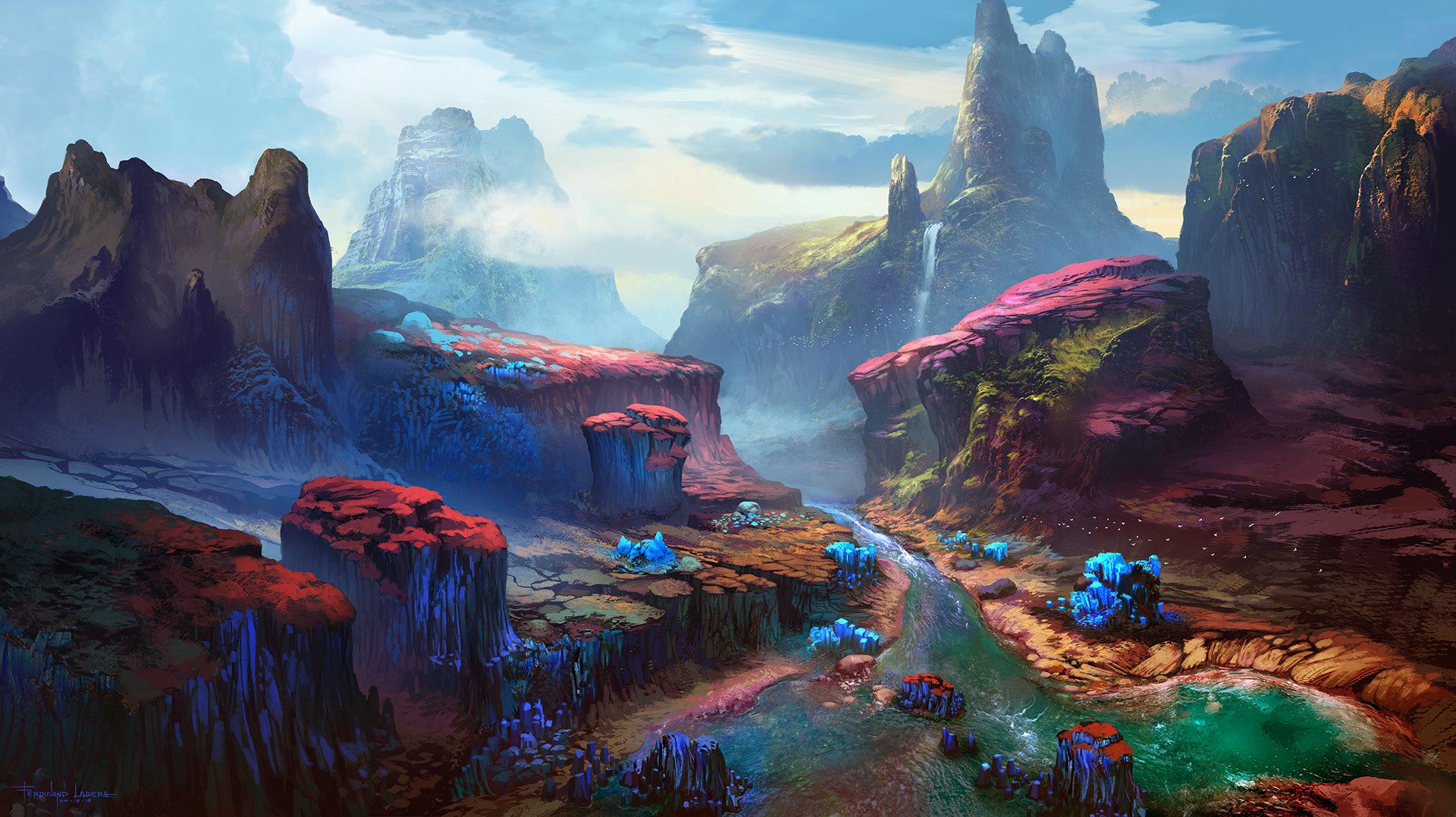
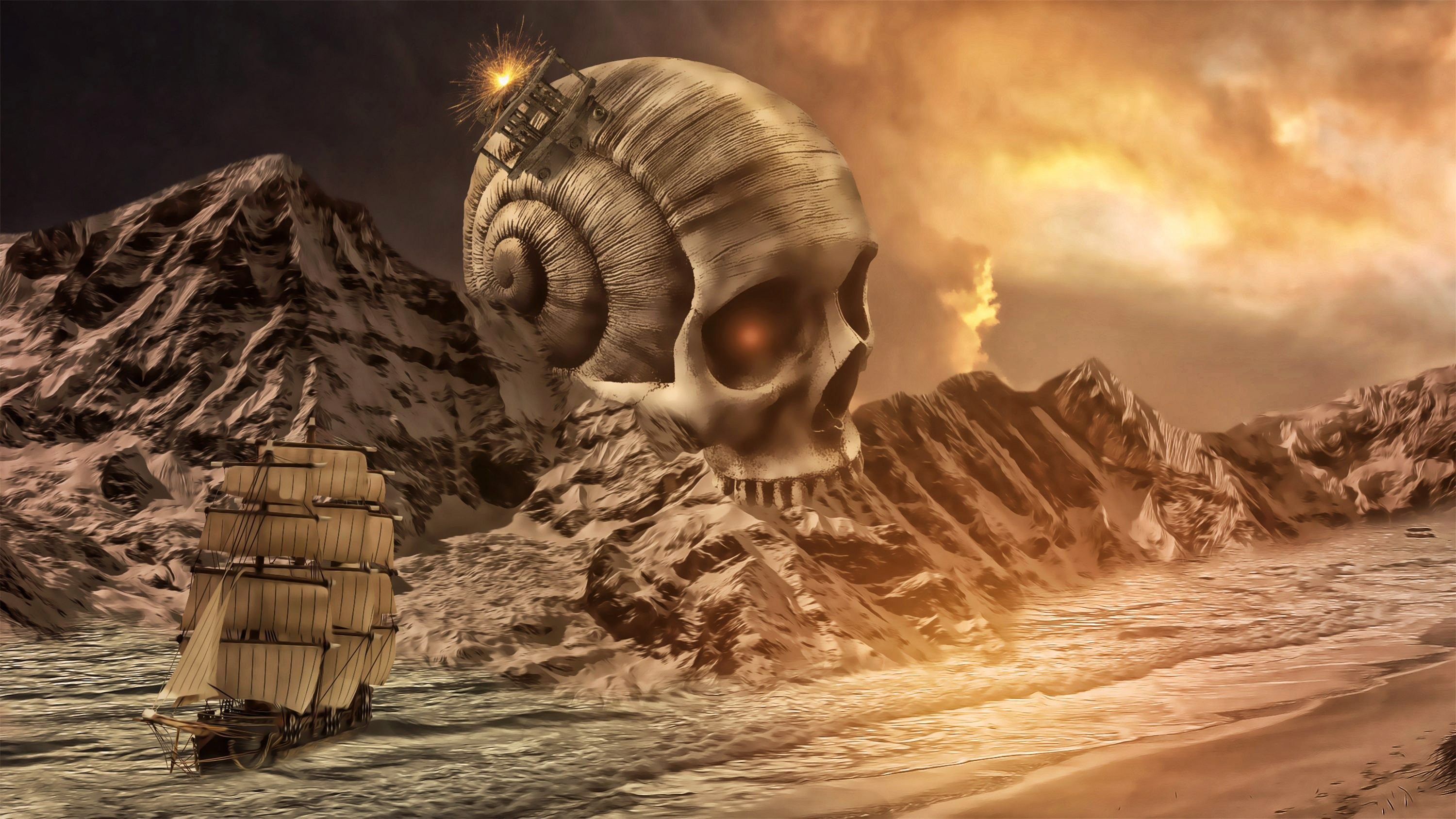


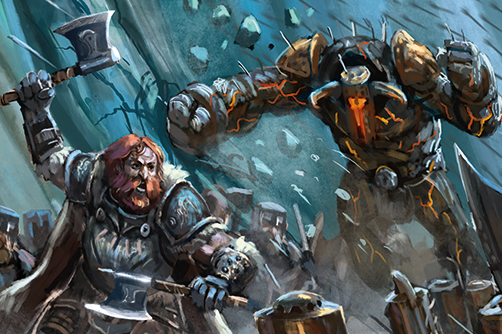

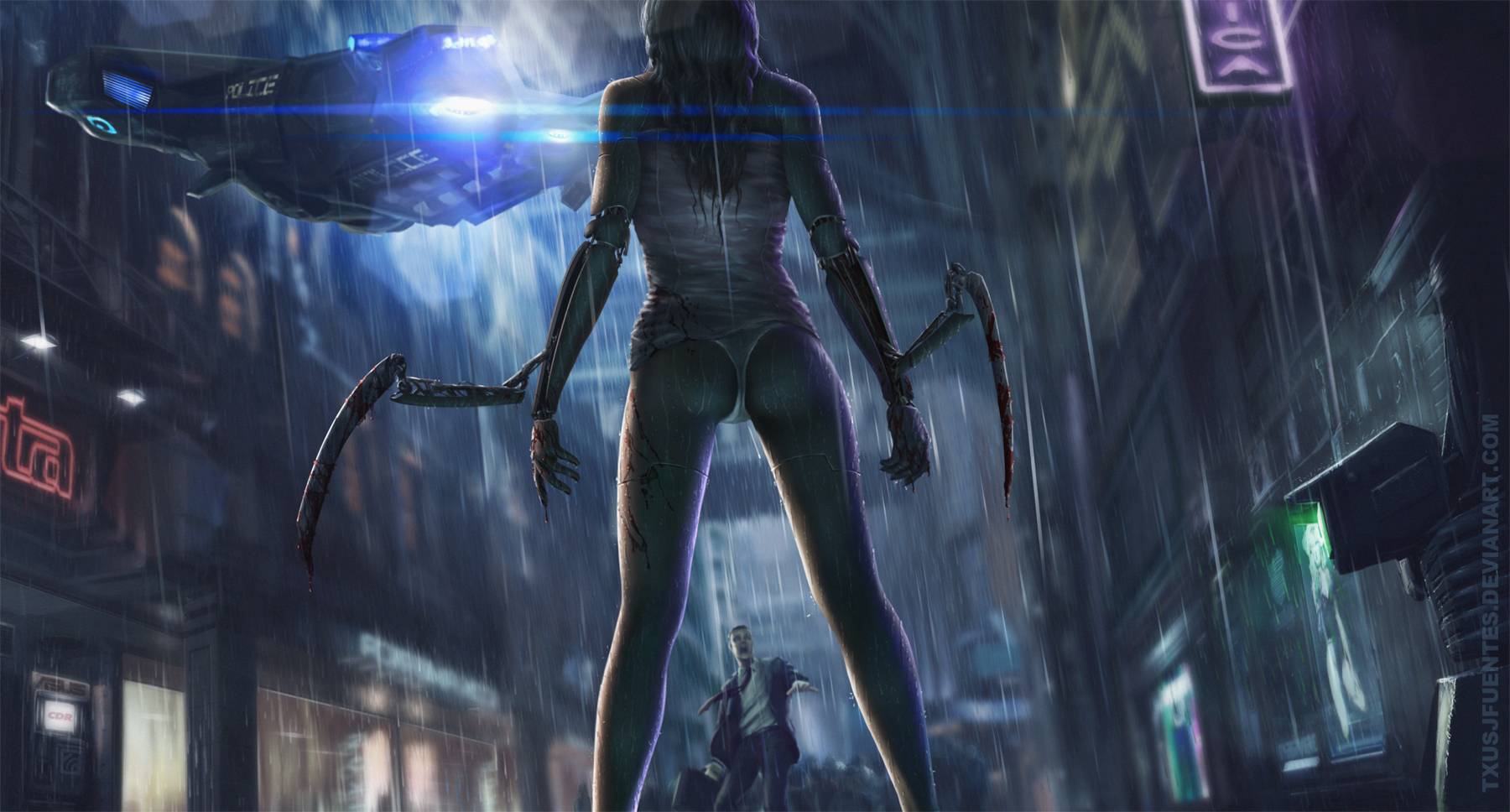

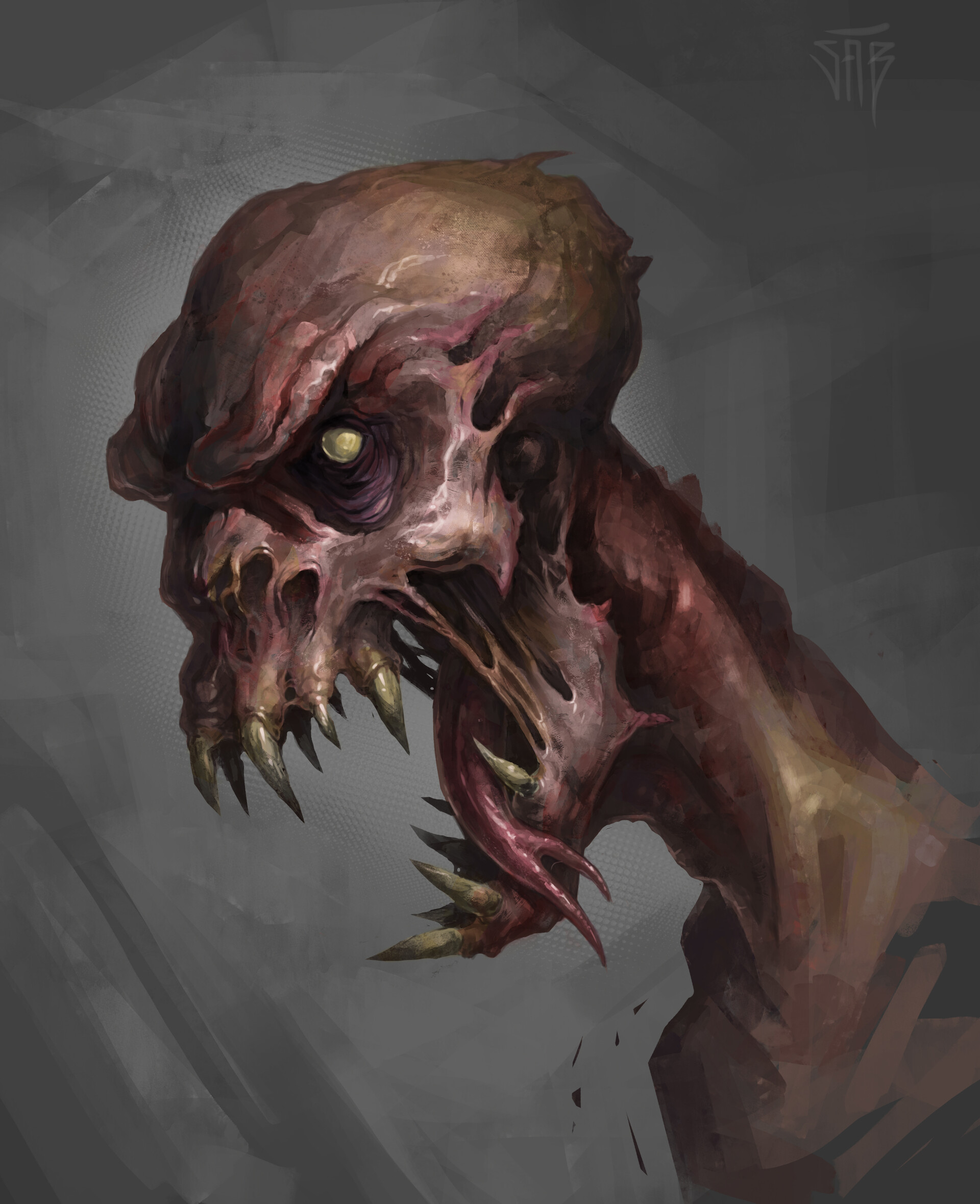
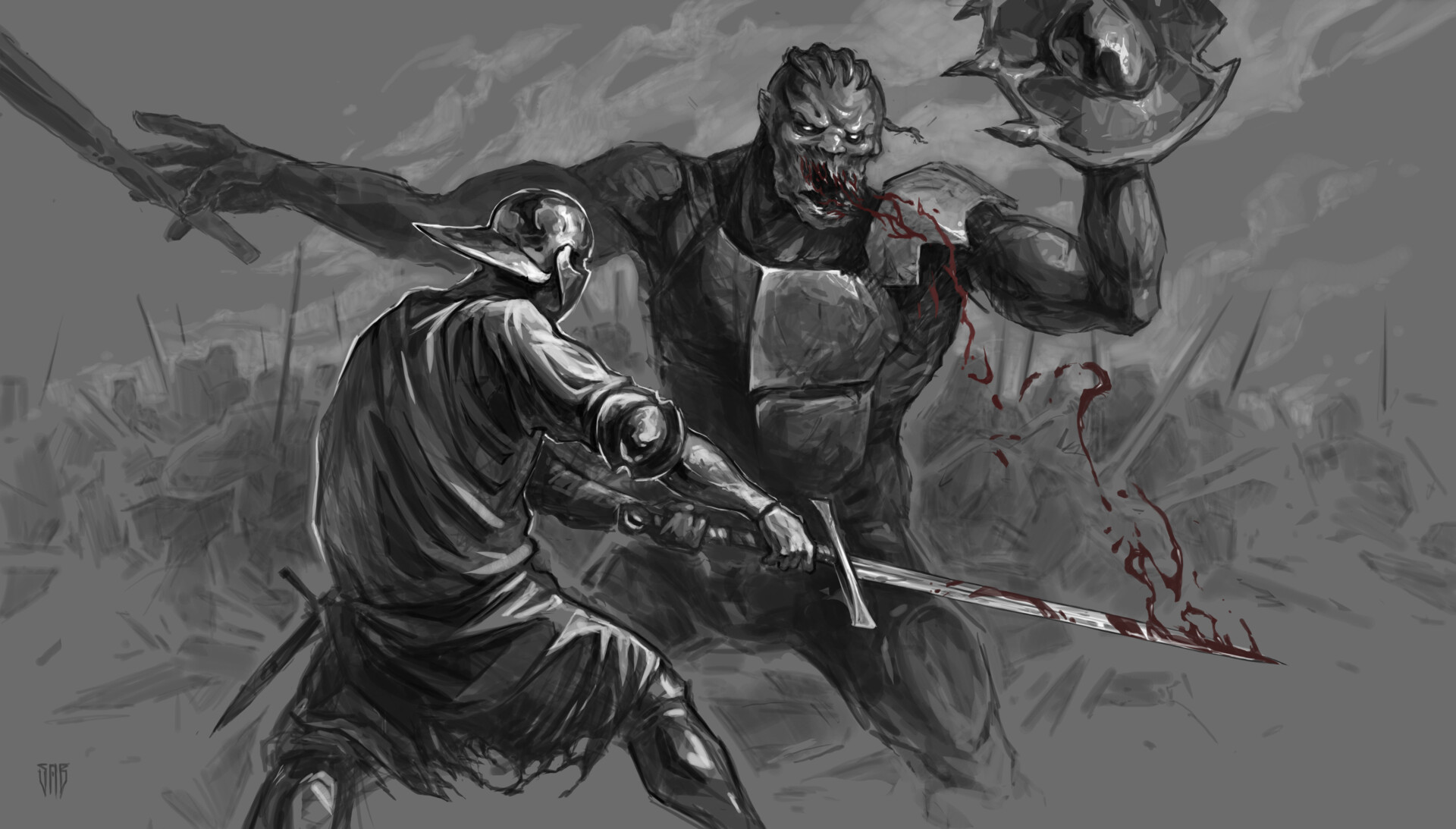

Comments
Post a Comment